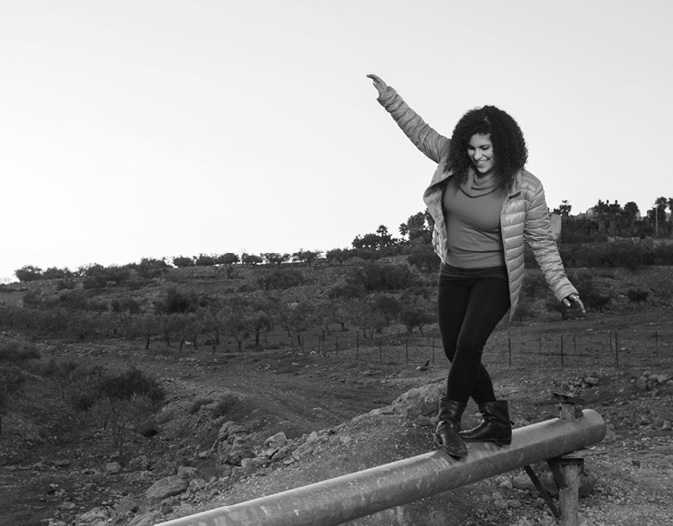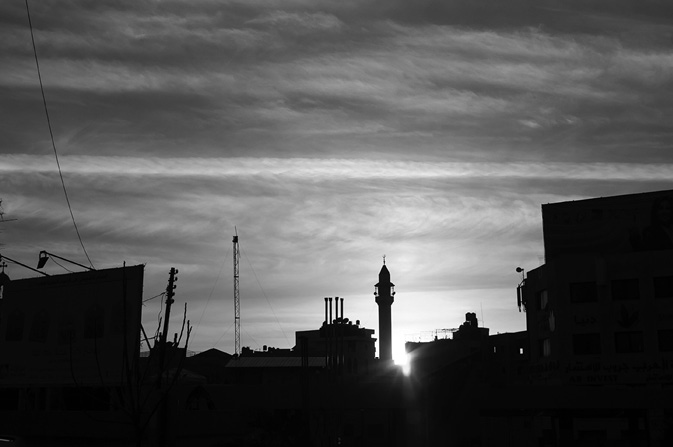‘The time for dancing in the streets has come.’
(Fanon, 1961/1967, p.57)
Re-reading Frantz Fanon’s words I was struck by their potency in relation to the narratives of the women included in this book. Some of these women continue to work as dance practitioners in their home environment; others have travelled abroad to pursue dance opportunities or further training. With the shifts in politics across the southern Mediterranean region some of the women find themselves in new roles influencing the directions of dance in their home locations. Since returning to my ‘other life’ in New Zealand, there is not a day that goes by where I do not think about someone I met on my travels who shared their story with me, who took the time to invite me into their life for a brief moment. I was especially affected by the stories and opinions shared by the eight women featured in this book – Hala, Mey, Nadia, Noora, Rania, Dalia El Abd, Dalia Naous and Nadra. Their words lingered with me long after our conversations ended. The hours spent reading and re-reading transcripts, pondering how to include their voices within these pages and shaping narratives into manageable chapters allowed me the chance to gain new insights and understandings of the stories they shared.
Figure 26: Noora Image by Arnaud Stephenson (2014)
There were numerous issues that the women raised in the interviews, topics that we debated at length and moments where we contemplated how to solve major political difficulties, conflicts, cultural tensions and concerns. At times it could be seen that the discussions were focused on more negative matters, the problems and the hardship they encountered. In part this is because the reality these women face is challenging. However, beyond the bleakness there were many moments where hopes and dreams were shared, where things were looked at with a humorous view, and light was made of situations. Stereotypes and assumptions of women, culture and dance were confronted, and the role(s) played by a female dance practitioner living and working in the southern Mediterranean region were re-thought and re-imagined.
There were times when our conversations revealed genuine beliefs that dance had the potential to be transformative for individuals and societies. Some of the women felt that the change they were making, even on a small scale, was significant in the transformation of their communities. Noora shared, ‘As a part of El-Funoun and working in Palestine I feel that I am making a difference – on a very small scale. I feel that there is value to our work, and the value of me and my work relies on being and functioning in this society.’ For others it was the notion that they were developing something that might be the foundation for future generations of dancers to build on. As Nadra explained, ‘Slow and steady I keep going, working to make dance education more accessible to people in Lebanon. If it doesn’t happen in my lifetime at least the process has started.’
For some of the women it was the expression of dreams related to their own dance practices that indicated their thoughts about the future. Nadia articulated, ‘I don’t say that I am a choreographer, I am not yet confident to say that. I dream that one day I can confidently say “I am a choreographer” and people will admire my work.’ There was also the expression of dreams and desires for dance within their communities or cultural contexts. Rania shared, ‘I think now more than ever dance has an important role to play in our society. Among the chaos the arts and dance can provide some sanity, relief or beauty. I would like people living in Jordan to see dance in this way.’
Past traumas reverberate throughout the southern Mediterranean region; the repercussions of the occupation of Palestine, the Arab Spring and the Syrian Civil War are ongoing and political directions are uncertain. Nevertheless, the experiences shared by the eight women in this book reveal that they are interrogating, shifting and encouraging dance in their communities. The attitude expressed in political activist Emma Goldman’s well-known quote – ‘If I can’t dance, I don’t want to be part of your revolution’ – echoed in the women’s stories. The thought that dance and dancers could contribute to change and possibly revolution was something people were contemplating and witnessing across the southern Mediterranean region. My most recent trip across the King Hussein/Allenby Bridge border clearly illustrated this to me.
I sat in the makeshift shelter waiting to board the bus to cross the King Hussein/Allenby Bridge to Jordan. The haphazard process of bags being taken for inspection and placed on buses began, with no clear indication of where one should wait and when exactly the next bus would arrive to take the swelling number of people across the border. No matter how many times I made this return journey from Palestine to Jordan, negotiating the Israeli security and border control along the way, the system or process of this crossing has never been clear. I waited.
A bus pulled into the parking bay in front of the crowd and a mass rush to secure seats began. I weaved through the crowd, ducking around large groups and squeezing my way to the steps of the bus. Once on board I found a seat next to a young woman wearing a bright red hijab and carrying a large shopping bag on her lap. The seats filled quickly. I felt a sense of relief that I would soon be out of the holding-pen environment. Before I had an opportunity to relax any more an Israeli officer entered the bus. I stared intently at the passport in my hands, studying the words on the cover – ‘New Zealand Passport – Uruwhenua Aotearoa’ – to distract myself from the presence of the officer who was moving down the aisle of the bus. The officer stopped next to me, I avoided looking up and waited for him to continue moving. He didn’t.
‘Passport?’ he said to me firmly.
I handed over the passport I had been so focused on, noticing how my hands had left sweaty prints on the cover.
He flicked quickly through the pages and gave it back to me by shoving it towards my face, inches away from my nose.
‘Off,’ he said, pointing to the door of the bus.
I didn’t move. I didn’t look at him.
‘Off!’ he said more forcefully this time, followed by, ‘Arabs-only bus.’
I stood up, placing my passport in my jacket pocket and picking up my handbag from the floor in front of me.
‘Fine,’ I said to the officer just as firmly as he had told me to get off the bus. It was not fine.
I followed the officer off the bus. Only then did I realize that I was the only foreigner on the bus, my blonde hair standing out a mile. Only then did I also realize what this situation could look like, that I was intentionally making a statement about the obvious segregation that was occurring at this crossing. I had a feeling that what was about to happen would not be pleasant or brief.
As I stepped off the bus two female officers walked towards me.
One said ‘Passport?’, and the other took my handbag from me.
Again I handed over my passport for an inspection that consisted of a tokenistic flicking of pages.
The officer with my passport in hand said, ‘Follow me,’ and turned towards the nondescript terminal in front of the bus. The woman with my handbag went in another direction.
Within minutes I found myself sitting on an uncomfortable plastic chair in a tiny closet-like office. The female officer sat with pen, paper and my passport on the desk in front of her. The questions began, starting off easily with name, nationality, age, travel plans. Then the questions turned to occupation.
‘Dance?’
‘Yes,’ I replied calmly.
‘What sort of dance?’
Figure 27: Sunset in Ramallah Image by Arnaud Stephenson (2014)
‘Contemporary dance.’ I kept my answers as short and clipped as possible.
The officer said, ‘What do you do with this dance?’
I said, ‘Teach it.’
‘And where do you teach it?’ The officer’s eyes met mine; I knew that she was hoping for me to blurt out something like, ‘I teach it in Palestine!’
I said ‘Around the world,’ being as vague as possible.
The officer decided to change tack. ‘Who do you teach dance to?’
‘University students, mainly.’ After saying this I regretted adding the word ‘mainly’ to this answer.
As I expected, she said, ‘Mainly? Who else do you teach?’
‘Children, adults.’
‘And what exactly do you do with this dance?’
I was genuinely confused by this question. I knew it was potentially a mistake to respond with a question, but I said, ‘What do you mean? I teach it.’
The officer scribbled notes.
She placed the pen down on the desk, sat forward in her chair and said, ‘Are you involved in politics? Is there a political agenda to your dance?’
‘No,’ I said firmly.
Sitting even further forward in her chair, she said, ‘So no revolution through dances, then?’
‘No,’ I lied.
‘Not at all?’
‘Not at all,’ I lied again.

